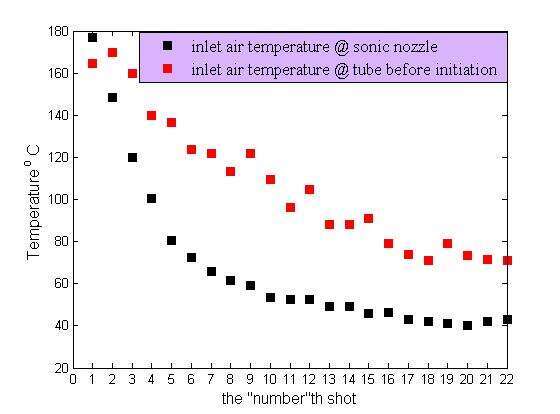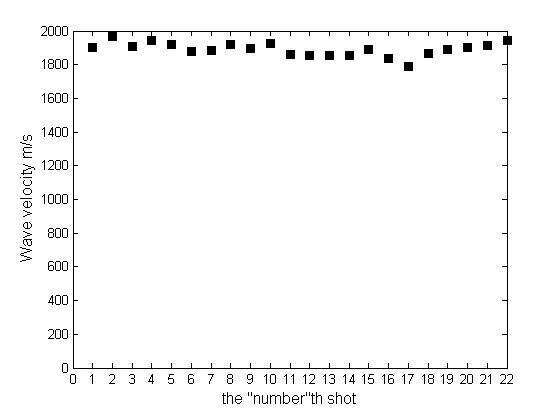Introduction
The present paper focuses on liquid-fuel pulse detonation engines (PDEs), and in particular to cold-start liquid-fuel pulse detonation engines without incorporating any auxiliary systems such as pre-heaters, pre-burners or alternative mechanisms which add heat to the inlet air. With the eventual goal of PDEs being employed either for aviation applications or for power generation, liquid-fuels are more desirable owing to their higher energy density and ease of storage. The ability to achieve successful detonations depends very strongly on the concentration of vaporized-fuel present in the two-phase reactants. Hence, the requirement of sufficient pre-vaporized fuel causes all of the above-mentioned applications to face an unavoidable difficulty: how to start pulse detonation engines in cold environments or under cold inlet air conditions. To solve this problem, the use of high-vapor-pressure fuels, such as n-hexane, was adopted [1]. Another method is to incorporate pre-burners or preheating systems to add heat to the inlet air so that the cold startup of liquid-fuel PDEs can be achievable [2]. However, after the cold-starting process, these auxiliary systems will be shut down and become unnecessary dead weights reducing the payload. Their presence thus constitutes a real drawback in practical aviation applications.
The present study takes advantage of the nature of inherent vaporized-fuel present in two-phase liquid-fuel/air mixtures. The use of a higher fuel fraction in two-phase fuel/air mixtures enables the formation of vapor-phase mixtures which are easier to undergo detonation, wherein the saturated vaporized-fuel and the air comprise the vapor-phase mixtures. Therefore, even using low-volatile fuels in cold environments, the use of excessively fuel-rich mixtures, which results in a vapor-phase composition suitable for detonation initiation, can achieve an operational liquid-fuel PDE. This method is much simpler because no auxiliary systems are required.
Theoretical Assessments
To assess whether the concept of excessively fuel-rich conditions is feasible, a theoretical assessment and an experimental demonstration are carried out. A theoretical calculation of phase equilibrium using SUPERTRAPP is addressed, wherein global equivalence ratios (EQ = 0.9 - 4.5) of Jet A-1/air at different mixture temperatures are applied. Although not all the processes necessary for achieving phase equilibrium are taken into account in this calculation, the bounds of possible states of the fuel spray can be established. As shown in Fig. 1, for EQ = 1, the vapor-phase equivalence ratio ranges from EQv = 0.19 at T = 27°C to EQv = 1.0 above T = 107°C. At EQ = 2, the higher fraction of fuel enables its corresponding vapor-phase equivalence ratio to reach a stoichiometric ratio at a lower temperature (T = 74.6°C) compared to the case for which EQ = 1. This result verifies that at a lower inlet air temperature, operational liquid-fuel PDE may be achieved by applying a richer fuel-air mixture. Table 1 shows that by applying a more fuel-rich mixture, the vapor-phase equivalence ratio at stoichiometric conditions (EQv = 1.0) could be obtained with a lower mixture temperature. For instance, when EQ = 4.5, the mixture temperature required for attaining EQv = 1.0 is 59°C, which is marginally higher than room temperature.
Experimental Demonstration
The experimental demonstration is conducted in a process during which the inlet air temperature Tnoz is cooled down from 180°C to 43°C and the global equivalence ratio of the reacting mixtures becomes increasingly richer (from EQ = 1.37 to 4.42) via decreasing the air mass flow rate, as shown in Figures 2 and 3. During the testing, the droplet diameter is maintained at SMD = 10 µm for a total of 22 shots. The measured wave velocities for all shots are in the range of 1790-1967 m/s, see Fig. 4. The results demonstrate that a PDE using Jet A-1 is capable of achieving successful detonations at this low inlet temperature of 43°C when the mixture temperature within the tube is 70°C. As Tair = 70°C and a global equivalence ratio EQ = 4.42, the vapor-phase equivalence ratio EQv = 1.35, see Fig. 5. In other words, if a stoichiometric mixture (with global equivalence ratio EQ =1) is applied, the excessively lean vapor-phase equivalence ratio of the mixture would result in a mixture which is difficult to undergo detonation. This reflects the fact that it is difficult to achieve successful detonations in a liquid-fuel PDE operating at low temperatures when the mixtures are close to the stoichiometric ratio.
Summary
From the theoretical assessment and the experimental demonstration, it has been shown that the cold-starting of a liquid-fuel PDE can be achieved by means of applying an excessively fuel-rich mixture, which provides an avenue for solving the critical cold startup problem of liquid-fuel PDEs. Here the slight heating of the tube (70°C) may be achieved via operating the PDE in the deflagration mode of combustion for several pulses. Once the temperature of the PDE tube is sufficiently high, the combustion within the PDE tube will automatically change from the deflagration mode to the detonation mode. Further experimental studies for starting liquid-fuel PDEs in cold environments will be carried out.
Reference
[1] Frolov, S.M., “Journal of Propulsion and Power, Vol. 22, No.6, pp. 1162-1169, 2006.
[2] Joshi, N.D., Tangirala, V.E., Hinckley, K.M., US Patent 2010/0077726 A1.
Table 1


Fig. 1

Fig. 2

Fig. 3

Fig. 4

Fig. 5

